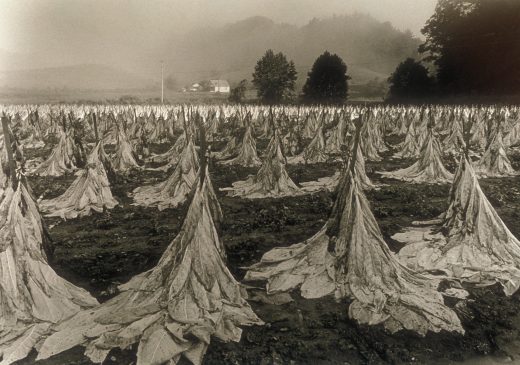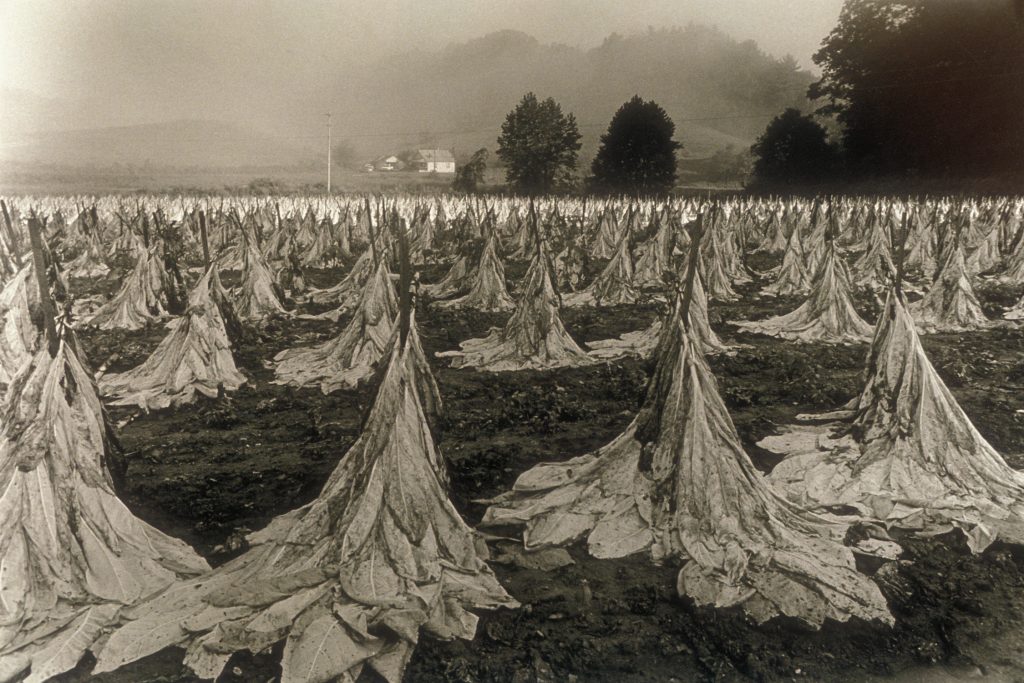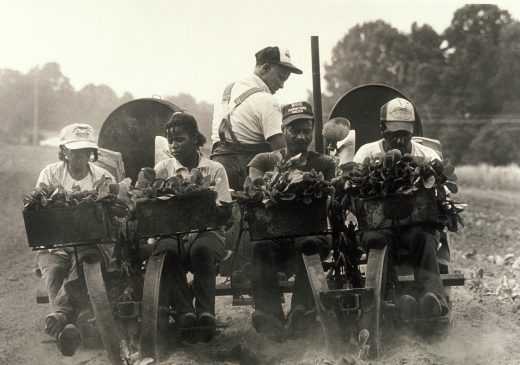1. Share the two tobacco photographs with the class as overheads. Discuss the imagery of the pictures and brainstorm reasons why the artist might have focused on tobacco farms as his subject.
- What do the tobacco sticks remind you of?
- Where do you think the family is heading? What makes you think that? Are they starting or ending their day? How do you know?
- Why would someone take pictures of a tobacco farm, such as the one portrayed here?
- What are the possible points of view that the artist might have about tobacco and agriculture? What are some common points of view about tobacco? How do groups for and against tobacco try to influence or persuade us to think of tobacco positively or negatively?
2. Talk with the class about how important the growth of tobacco has been to the state through the years by sharing figures about annual income and number of tobacco-related jobs (visit this link for information and tables on both of these topics). Explain how North Carolina was affected by class-action lawsuits that led to the passage of a 1999 law that governed the use of tobacco settlement funds and adversely affected farmers in many rural areas. For a detailed explanation of the 1998 tobacco settlement in North Carolina, check out this link.
3. Tell the students that they will be asked to adopt a positive or negative view of tobacco and must try to persuade their peers with reasoned arguments. Divide the class into six small groups (two “economic,” two “political,” two “social”). Assign each group to argue “for” or “against” tobacco production, based on its area of focus (that is, one group “for” tobacco production due to “economic” reasons, one “against” tobacco production for “social” reasons etc.). Provide students with copies of Internet articles or other documents to help explain the production of tobacco in North Carolina and its implications for the citizens of our state (helpful Web sites can be found at this link and this link).
4. Instruct each group to prepare an argument for its particular area of focus, based on the information provided. Encourage students to use the computer lab or library to locate additional resources to support their case, if necessary. Provide them with a graphic organizer to arrange their thoughts and provide main and supporting details that link opinion to reason.
5. Before the debate, ask each group to design at least one promotional sign to advertise its viewpoint. Each sign should include a catchy slogan and pictures/symbols that relate to the area of focus. Have students look at Rob Amberg’s photographs again.
- How could these photographs be used to make a persuasive case for or against tobacco production?
- What are some other images or words that relate to tobacco that could be used in a persuasive image?
- What kind of emotional impact would these words and images have?
Have the students brainstorm images and phrases that could help persuade the audience to their point of view before creating their sign. Tell students that they should be prepared to discuss their images and question other groups’ images during the debate.
6. Combine all three “for” and all three “against” groups to allow them to prepare their argument strategies collectively. After both sides have had an opportunity to organize their cases, review the ground rules for class debate and tell the students how much time they will have to share their arguments.
7. Facilitate the debate about whether North Carolina’s farmers should or should not continue production of tobacco in our state. Display the groups’ promotional signs during the debate, and allow discussion about the images during the debate.
8. As a concluding activity, ask students to reflect in writing on the political, economic, and social impacts of tobacco on North Carolinians. Have them fully explain their rationale for why we should or should not continue its production.
Escrito por Jill Taylor, educadora de la NCMA




